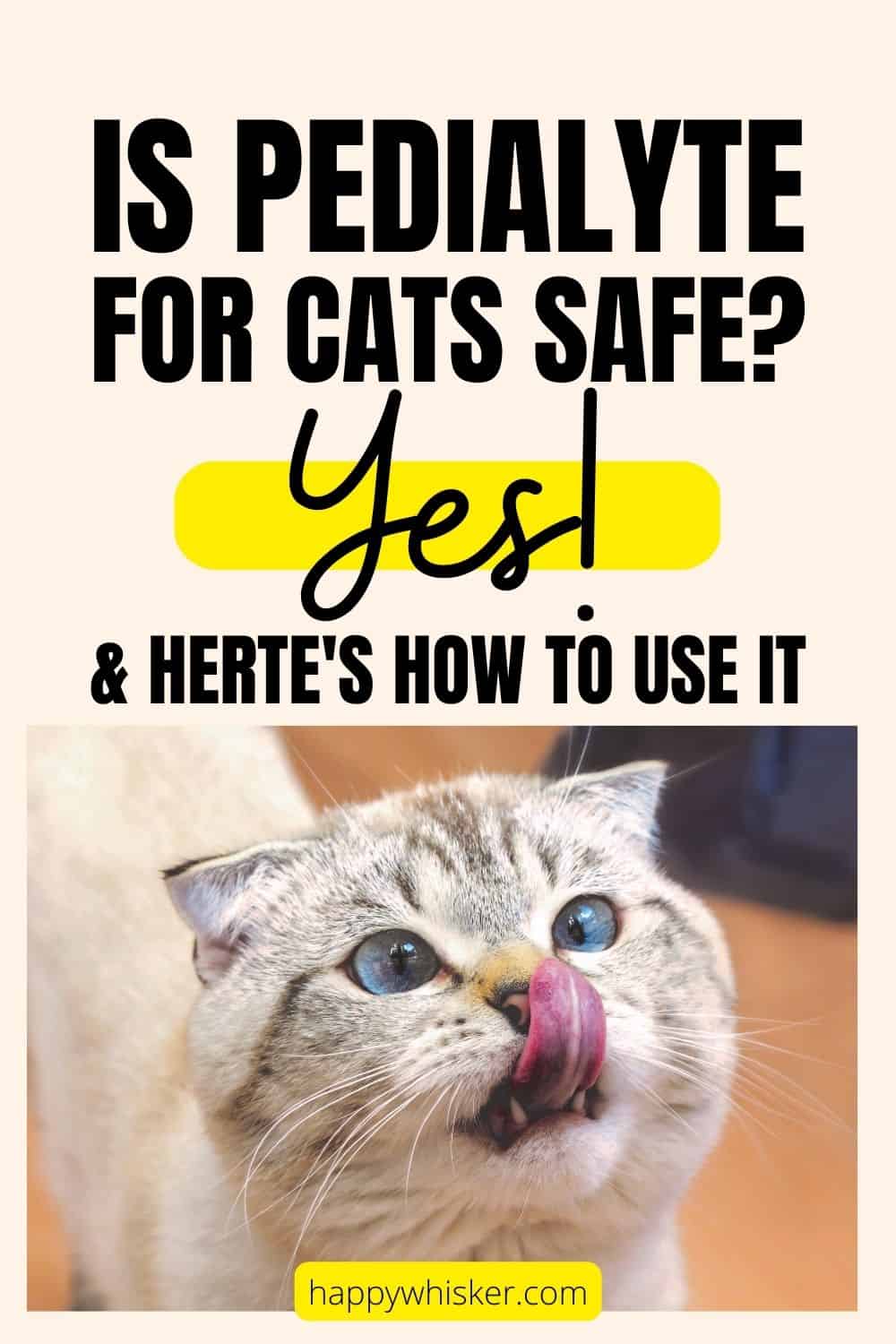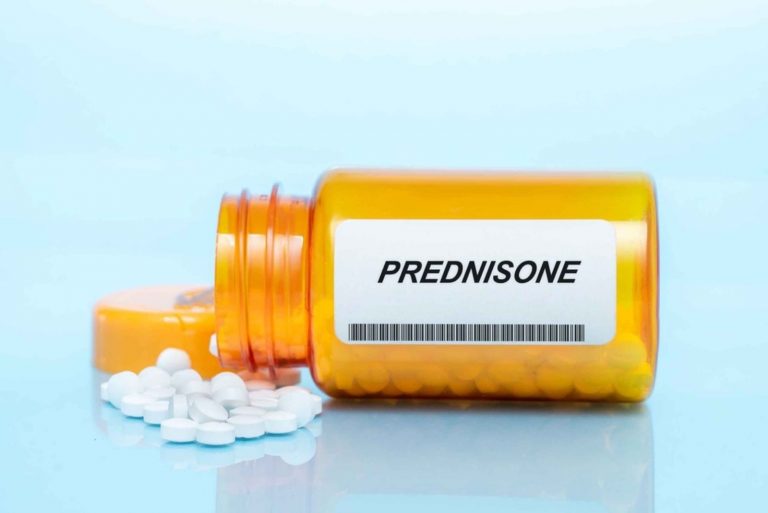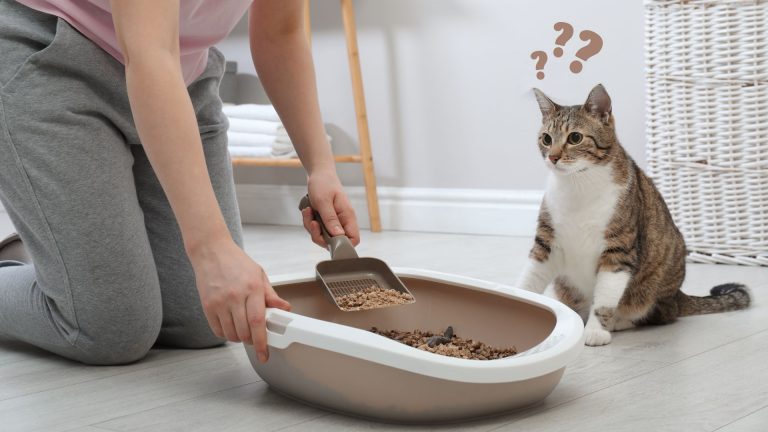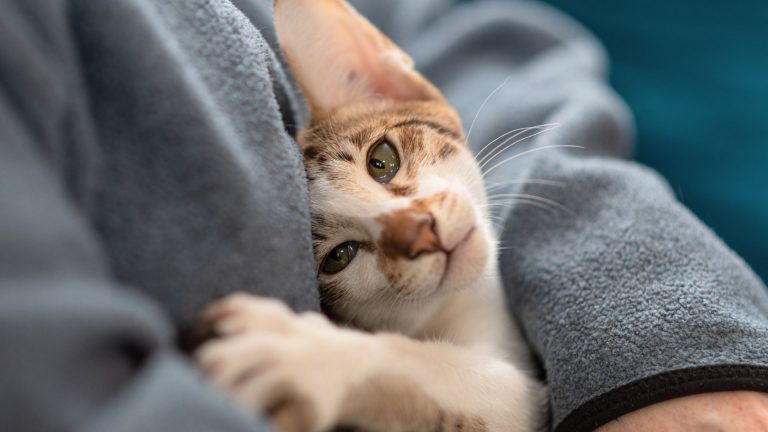Is Pedialyte For Cats Safe? Yes! And Here’s How To Use It
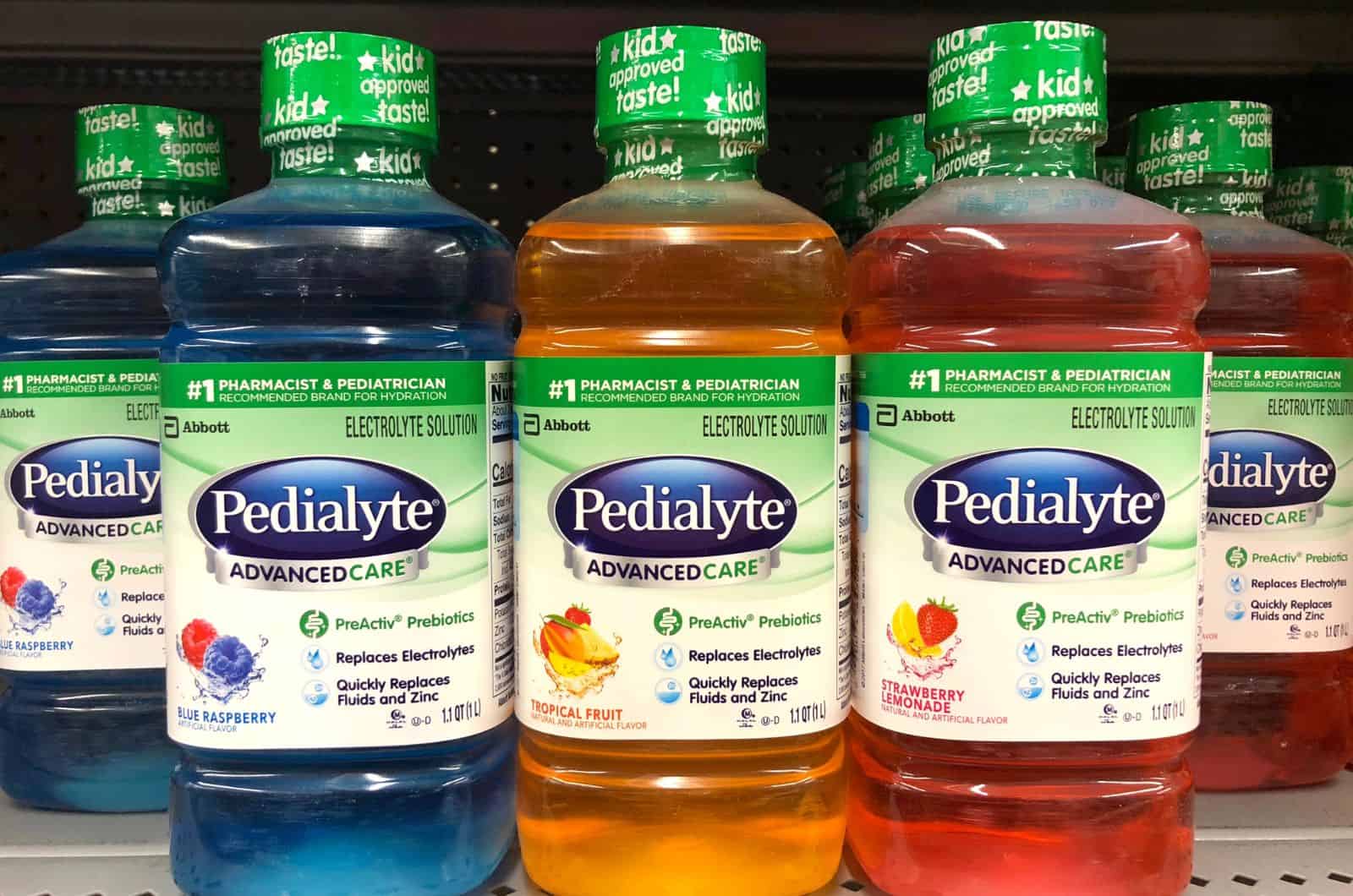
If you’ve noticed signs that your cat is dehydrated, you are probably looking for an effective way to get them rehydrated and healthy again.
You might have heard of Pedialyte drink helping dehydrated cats get better more quickly.
And it is true – giving Pedialyte to mildly dehydrated cats is an efficient way to replenish their levels of electrolytes and water in the body.
This “magic drink” has become everyone’s go to drink for treating dehydration. From athletes to little children, and not forgetting people with a hangover… It has also been proven safe for cats as well!
Pedialyte for cats can be an efficient solution to a dehydration issue. However, it’s important to know how to give this solution to a cat, when it should be given and how much is required.
Continue reading to learn the answers to these questions, as well as how to prevent dehydration in the first place.
All About Pedialyte For Cats
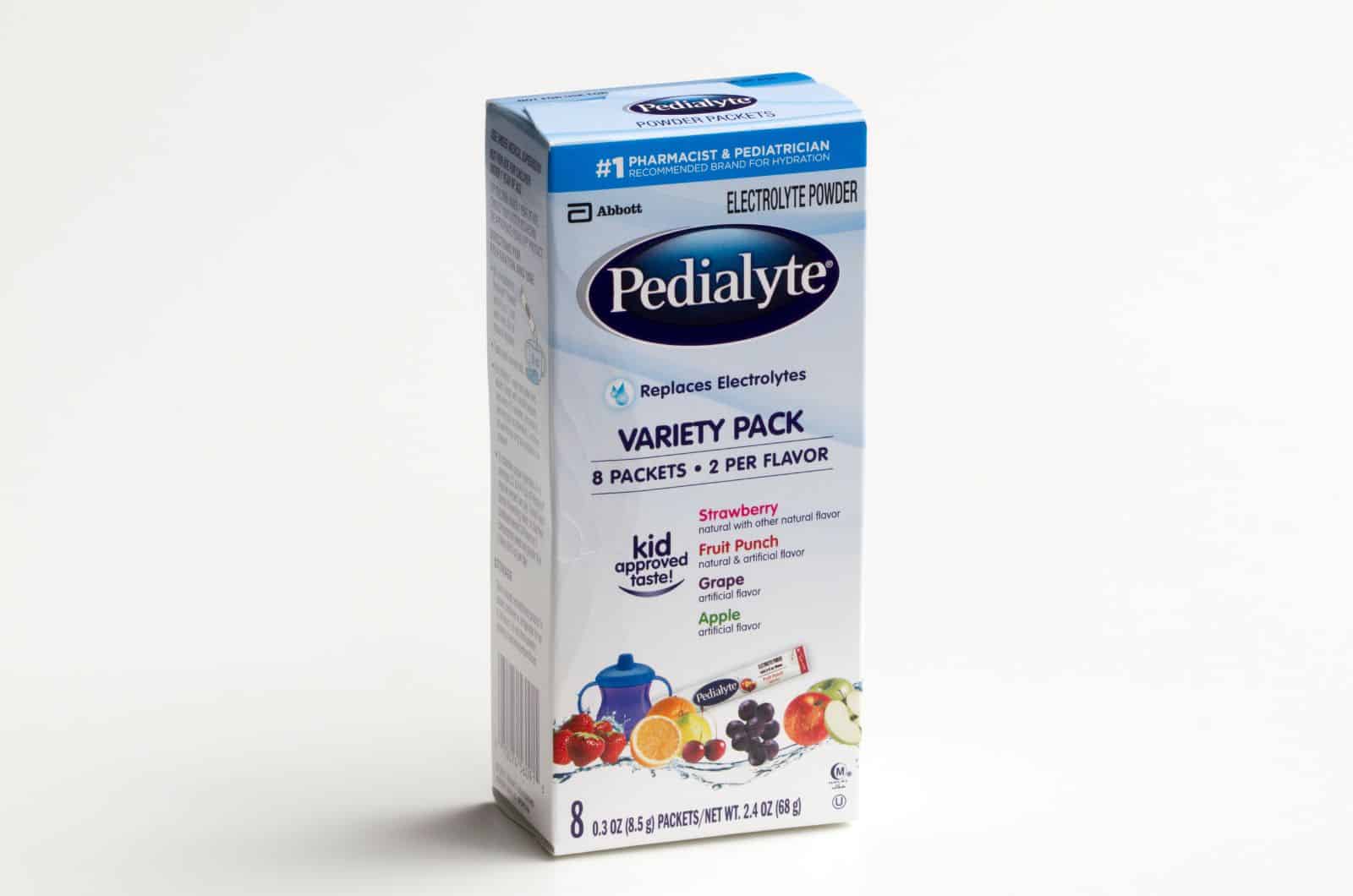
Before I get into the details about Pedialyte use for cats, I must mention that Pedialyte is only an option if the cat’s dealing with mild dehydration that can be treated at home.
Severe dehydration will require veterinarian care. If you suspect that’s the case, please don’t try giving your cat this drink, but instead, go straight to the vet.
Without any further ado, let’s get started!
1. What Exactly Is Pedialyte?
Pedialyte is the brand name for a drink composed of water and electrolytes. This brand is not new to the market, as it’s been around for decades. Nevertheless, they’ve stayed on top of the rehydration drinks list for some time.
Pedialyte offers a number of different flavors, and it is available in both liquid and powdered form. Essentially, you can buy either a bottle of Pedialyte drink, or a packet containing Pedialyte powder which you can dissolve in water.
It is popular among athletes due to its low sugar concentration (as opposed to many other sports drinks that have a high sugar content, such as Gatorade).
It is also efficient in rehydrating kids and adults after illness. Now we also know that Pedialyte is safe to give to cats and dogs.
2. What Does Pedialyte Contain?
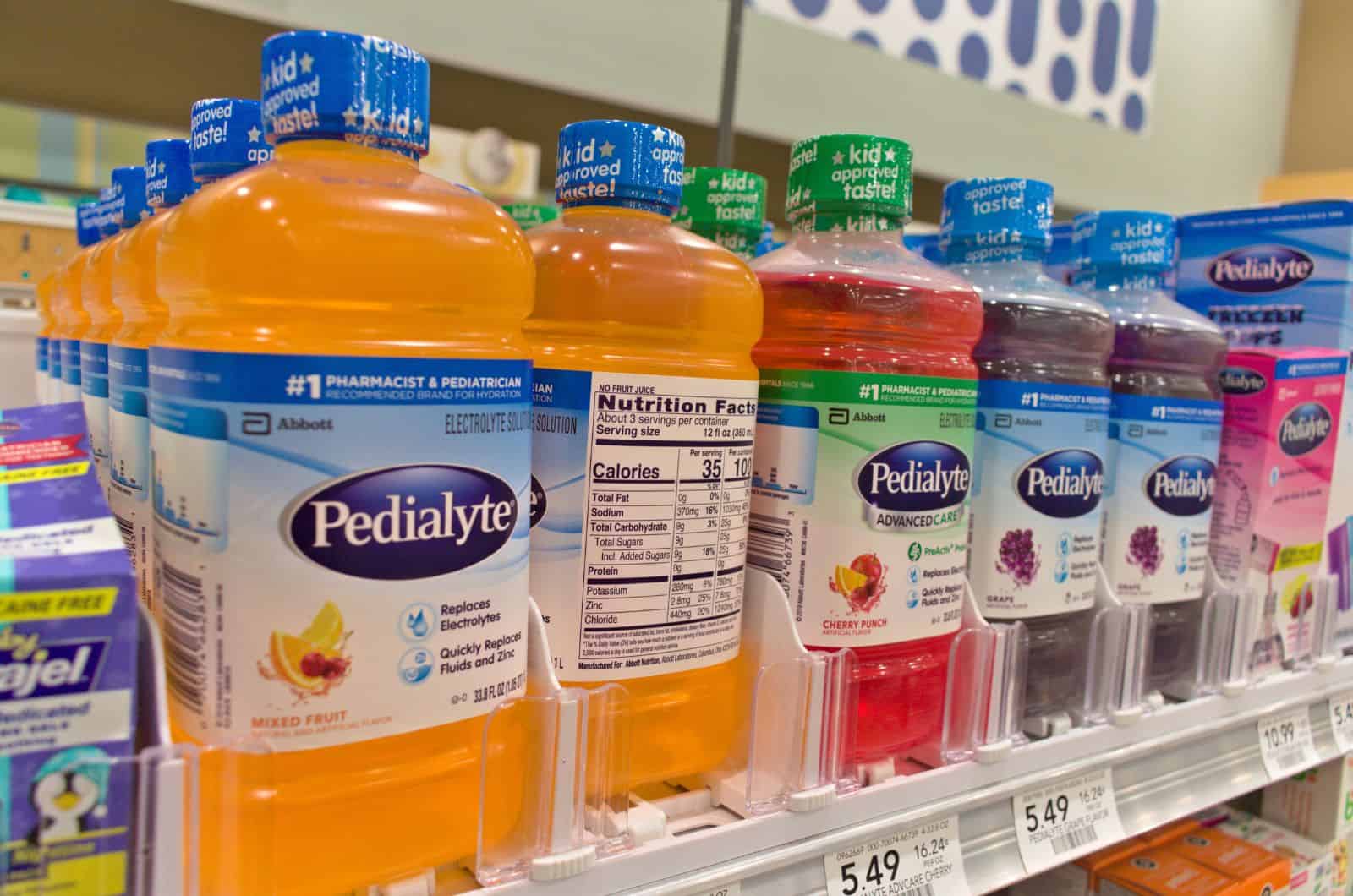
Pedialyte is an electrolyte solution, so its main ingredients are:
• Water
• Glucose
• Electrolytes
Electrolytes are minerals that are necessary for various bodily functions, so maintaining optimal levels of electrolytes in the body is extremely important.
Electrolytes which can be found in Pedialyte include:
• Sodium
• Potassium
• Chloride
• Zinc
It contains no artificial colors or flavors, and it’s gluten-free.
3. When Is Pedialyte Used?
Mild or moderate dehydration occurs when a cat has been vomiting a lot or has had diarrhea. This results in the loss of fluids and loss of the electrolytes dissolved in fluids.
Pedialyte is used in cases of mild to moderate dehydration.
Using it in cases of severe dehydration (for people or cats) is strongly discouraged, as severe dehydration usually requires more robust treatment (such as receiving IV fluids).
Maintaining certain levels of electrolytes in the body is vital for health.
Therefore, imbalance of these electrolytes can be a serious issue. With Pedialyte, the lost electrolytes are replenished so the cat should be feeling better sooner than if rehydrating with just water.
4. Is Giving Pedialyte To Cats Safe?

Pedialyte is safe to be given to infants and young children, which indicates that it contains no potentially dangerous ingredients.
So yes, giving Pedialyte to cats is completely safe, as it’s composed of only water, sugar and electrolytes.
It is also safe to be given to cats that suffer from various health issues, such as pancreatitis and kidney disease. Therefore, don’t worry about your cat while using this electrolyte solution. If you are in any doubt over whether it is suitable, talk to your vet.
5. How Do I Administer Pedialyte & How Much Can I Give My Cat?
First of all, choose an unflavored Pedialyte. Most cats do not like flavored drinks designed for humans, so make sure the version of Pedialyte you get is unflavored.
Using a syringe or a dropper, give your cat a few drops of Pedialyte at 10 minute intervals.
Do this for an hour. Administering small amounts of Pedialyte into the cat’s mouth multiple times is preferable to giving your cat a larger amount of Pedialyte all at once.
A good rule of thumb is 3 milliliters per pound of body weight, up to three times per day.
If you are having trouble giving Pedialyte to your cat, freeze the liquid into cubes and, if necessary, mix in some tuna water.
Even if they refuse to drink or accept Pedialyte, some cats may lick flavor-infused ice cubes.
When you see your cat is starting to feel better, try giving your cat fresh water and wet food (especially if your feline has not eaten for some time).
It is recommended to consult your veterinarian before giving your pet Pedialyte. Even though it’s a cat-safe drink, it’s best to ask your veterinarian first, as they will know your cat’s medical history and whether Pedialyte is the best rehydration choice.
6. Can I Give My Cat Pedialyte Daily?
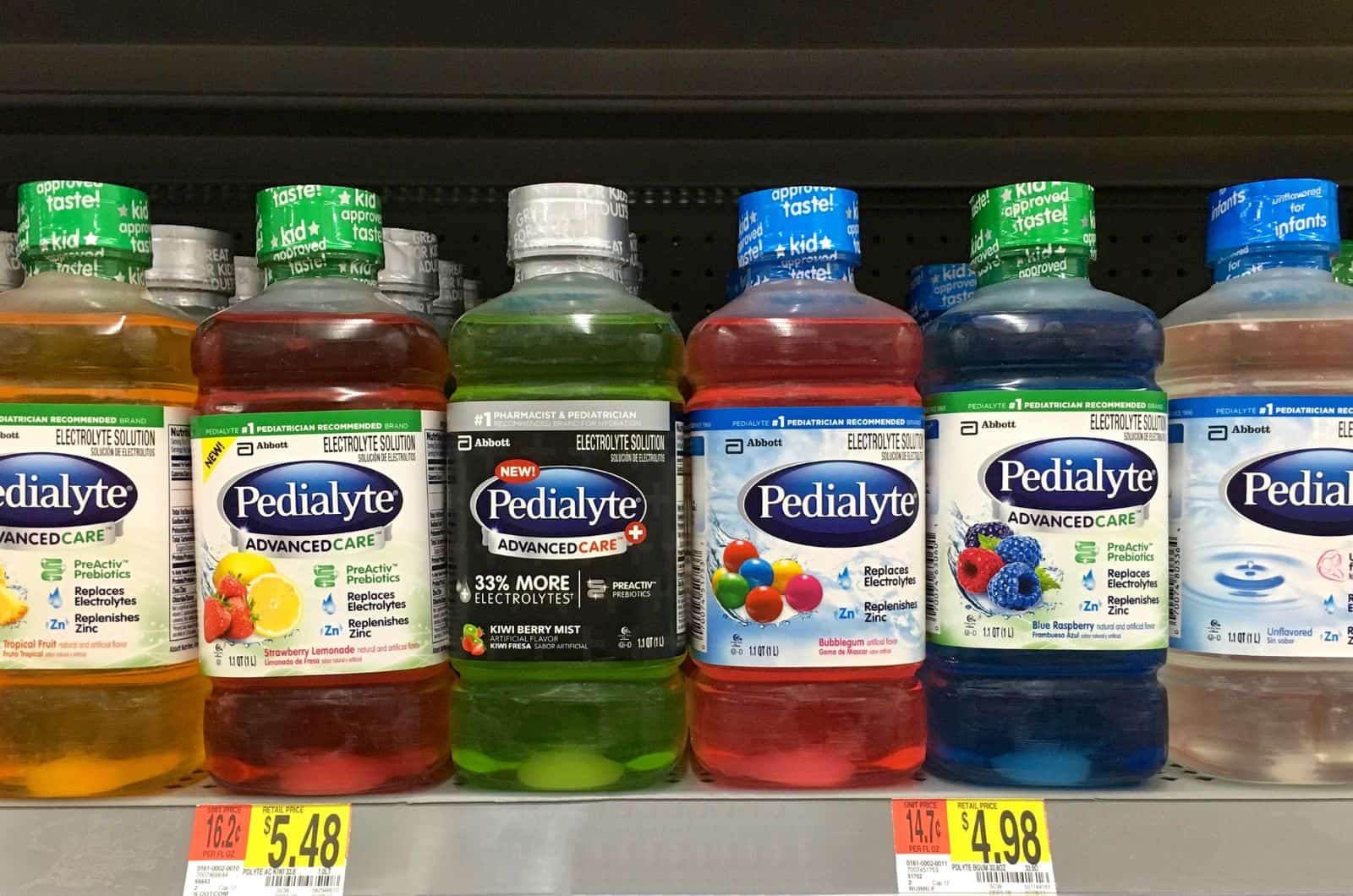
Considering this electrolyte solution is completely cat-safe and healthy, some cat owners might consider introducing it as a regular part of their cat’s diet.
However, Pedialyte should only be given to cats if they’re moderately dehydrated. If your cat is not suffering from dehydration, there is no reason to give them Pedialyte!
Carry on giving your cat fresh water; there is no need for extra electrolytes in your cat’s body.
While your cat is not at risk of overdosing when using Pedialyte, there is simply no need for it, as regular water is perfectly fine for your cat.
7. Can I Give Pedialyte To A Kitten?
Yes, Pedialyte is also kitten-safe.
Pedialyte can be given to kittens for the same reason as for cats, and that is mild dehydration. In the case of severe dehydration, you really need to take your kitten to the veterinarian.
8. Are There Any Side-Effects Of Giving Pedialyte To A Cat?
The inclusion of zinc in Pedialyte makes some people worry about the safe dosage of this drink.
However, it must be said that the amount of zinc in Pedialyte only makes up a minor percentage of the daily required intake of zinc.
It can be said that there are no side-effects of giving Pedialyte to cats, so don’t worry about it.
Dehydration In Cats Explained
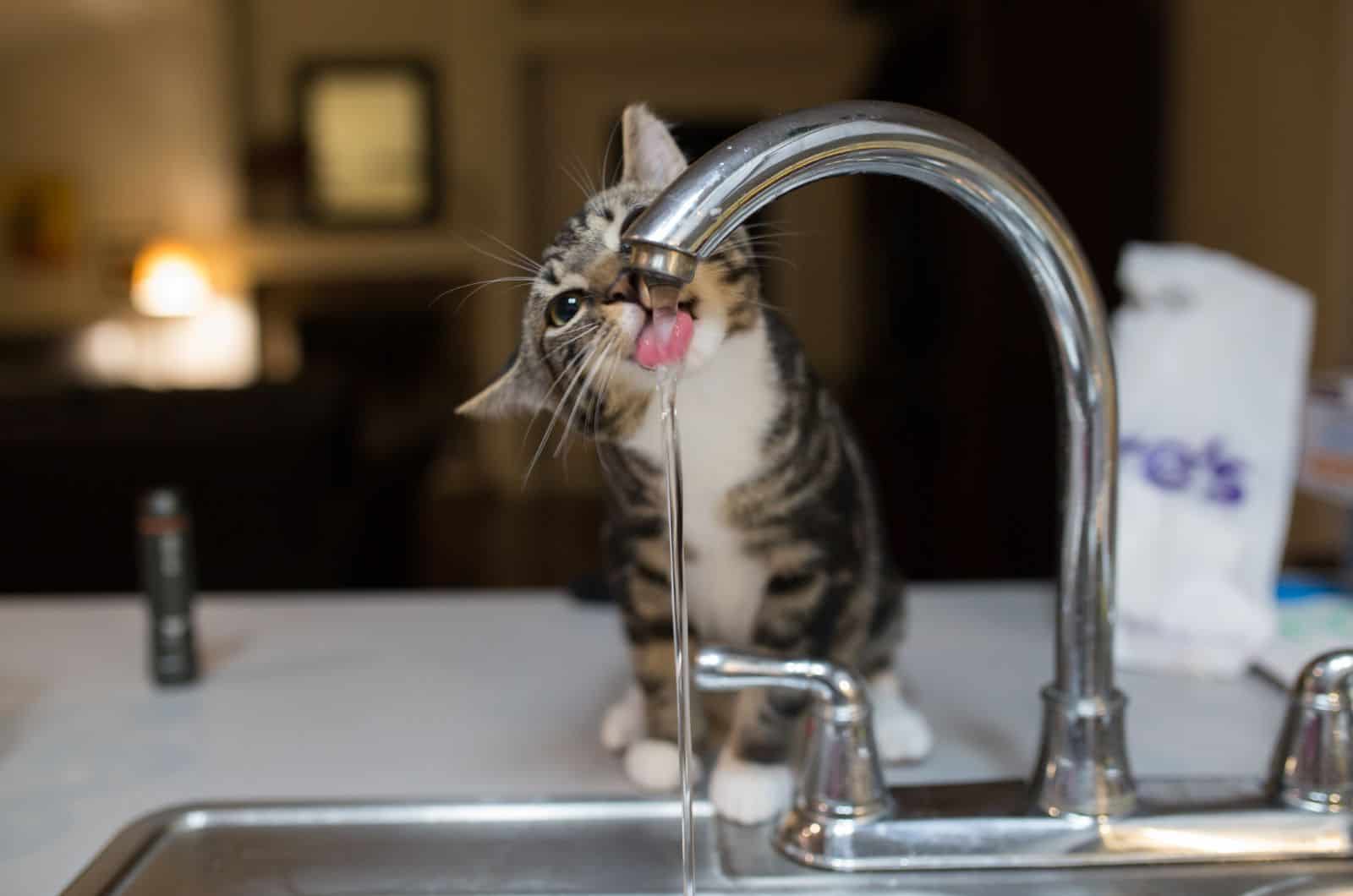
Pedialyte is given to cats in order to combat dehydration, so let’s learn more about what dehydration actually is and how you can prevent it in the first place.
1. What Are The Symptoms Of Dehydration?
When it comes to dehydration in cats, there are symptoms that are obvious, and symptoms that are not so obvious.
Symptoms of dehydration you will easily notice include:
• Lethargy
• Lack of appetite
• Lack of energy
• Decreased water intake
• Sunken eyes
• Pale gums
• Dry mouth
• Constipation
• Behavior changes
Symptoms of dehydration that are not so obvious are:
• Elevated heart rate
• Poor capillary refill time
• Poor skin elasticity
How To Recognize Dehydration When There Are No Obvious Symptoms
Grasp the skin on your cat’s neck or shoulder blades and gently pull it towards you. If the skin retracts slowly, then that indicates your cat is most likely dehydrated. In well-hydrated cats, the skin retracts immediately.
Another way is to press your finger flat on your cat’s gums. When you remove your finger, if the gums remain pale after 2 or 3 seconds, then that indicates dehydration. In healthy cats, the gums will turn red again after 2 seconds max.
2. What Are The Potential Causes Of Dehydration?
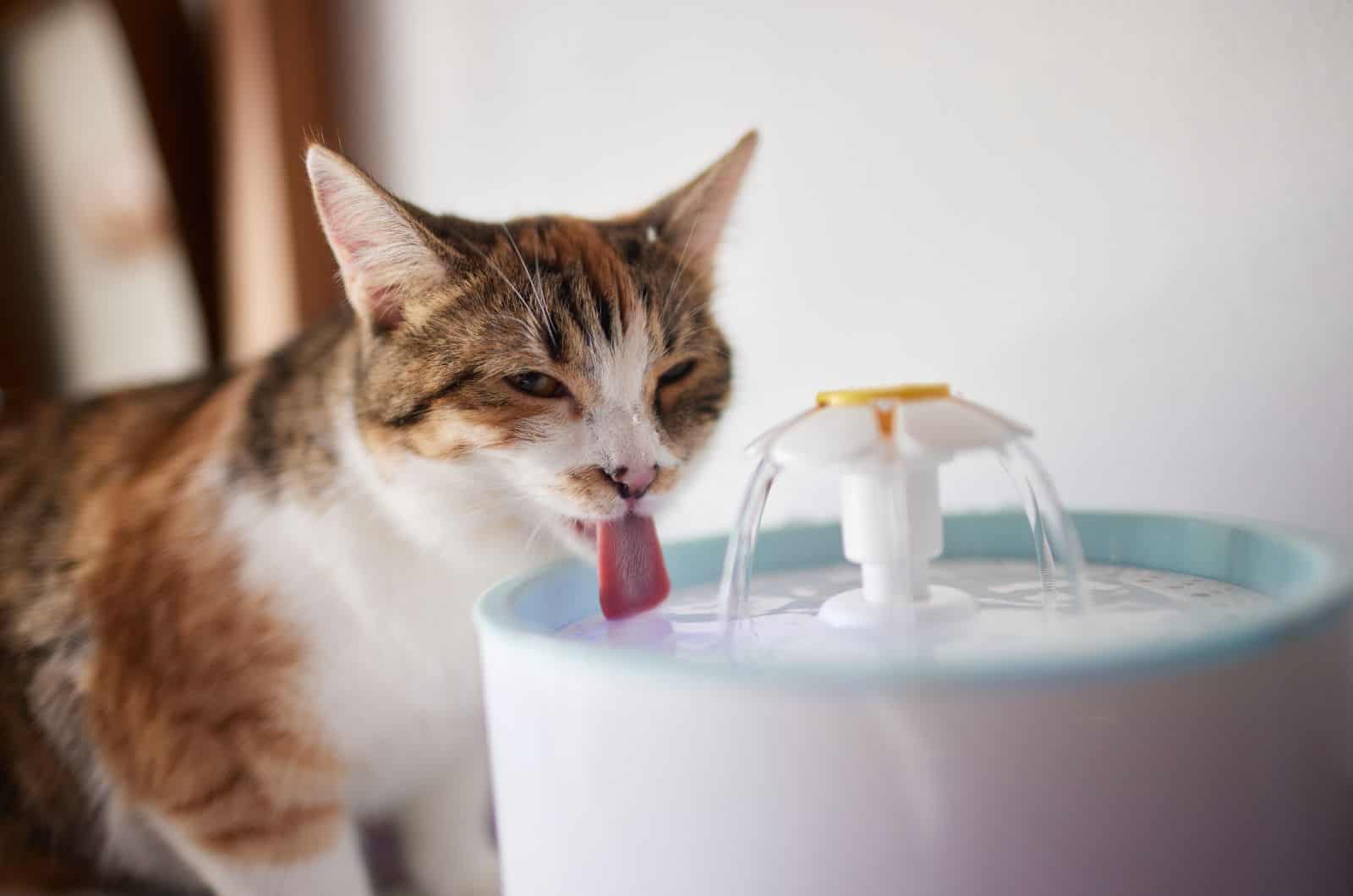
Potential causes of dehydration are:
• Chronic kidney disease
• Diabetes
• (Chronic) vomiting
• Diarrhea
• Hyperthyroidism
• High fever
• Being out in hot weather (heat stroke)
• Not drinking enough water
3. What Can I Give My Cat For (De)hydration?
Cats are known for not being huge fans of water, but they definitely need water to maintain their health. Every day, your cat should drink 3.5 to 4.5 ounces of water for every 5 pounds of body weight.
If your cat does not drink enough water, you need to increase their intake of wet cat food, as wet cat food contains a lot of water.
Cats who eat mostly dry food won’t get as much water from it. They must drink from their water dish to stay hydrated.
Suggested: 8 Best Alternatives To Sub Q Fluids For Cats (2023)
4. How Dangerous Is Dehydration For Cats?
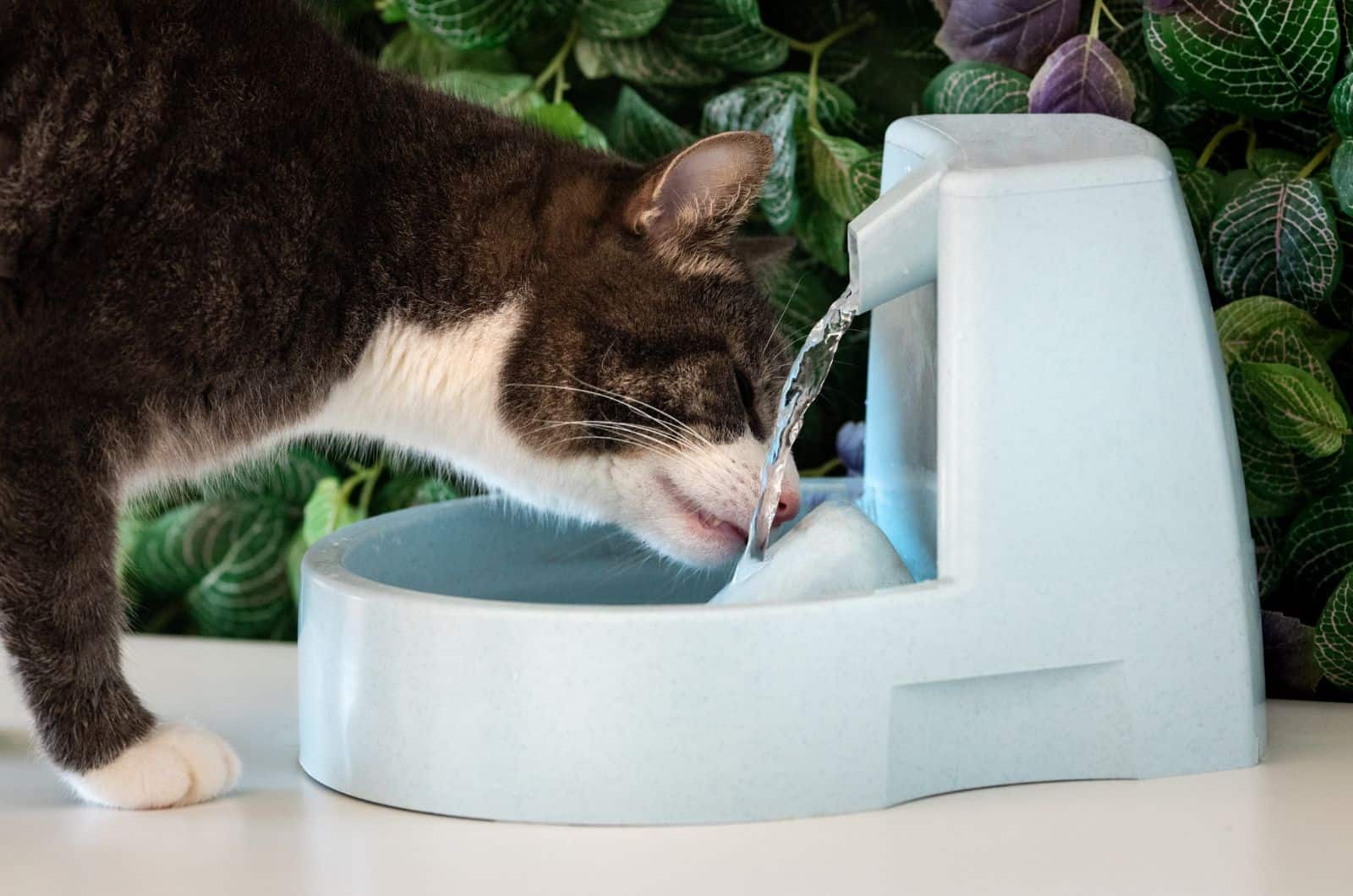
Dehydration can result from vomiting, diarrhea, or bleeding. It is a dangerous, sometimes fatal, condition.
A cat that is dehydrated loses intracellular fluid, experiences a reduced blood volume, and can have electrolytes at dangerously low levels.
It’s common for a sick cat to not feel well enough to drink additional fluids to make up for lost fluid, which can quickly become life-threatening.
5. When Is It Time To Go See A Vet?
If you observe your cat is not getting any better, is not regaining its strength, or is vomiting and having diarrhea and still refuses water and food, then you need to see a vet.
6. How Is Dehydration Treated?
Mild dehydration can be treated at home, while more severe cases of dehydration need to be handled by a veterinarian.
In the case of mild dehydration, home remedies such as Pedialyte and water mixed with tuna juice can help a cat to rehydrate.
In the case of severe dehydration, a cat might need subcutaneous fluids or IV fluids to recover. Extreme dehydration can cause damage to multiple organs, so treating it on time is vital. Finding the underlying cause of dehydration is the primary goal after the successful treatment of dehydration.
7. Will My Cat Be Okay?
Yes, in most cases, cats recover from dehydration fairly quickly.
In the most severe cases, dehydration can be fatal, but this is very rare, especially if your cat’s lack of hydration is treated promptly.
I’m sure that you’ll devote time to solving your cat’s dehydration as soon as you notice symptoms and realize something is up with your cat’s health.
So do not worry, your cat will be okay!
8. How Do I Prevent My Cat From Getting Dehydrated?
Although most times you cannot prevent dehydration (for example, if it’s due to vomiting and diarrhea), it is still good to do all you can to prevent it when possible.
Below are some tips & tricks for making sure your cat stays hydrated throughout the day:
• Make sure your cat eats both wet food and dry food
• Make sure your cat’s water bowl always has enough water
• Make sure your cat’s water is fresh
• Make sure your cat’s water bowl is always clean (cats do not drink water out of dirty water bowls)
• A water fountain is a good option to keep water moving and interesting for your cat
• If your cat does not like regular water, try adding some tuna juice to the water bowl
In Conclusion
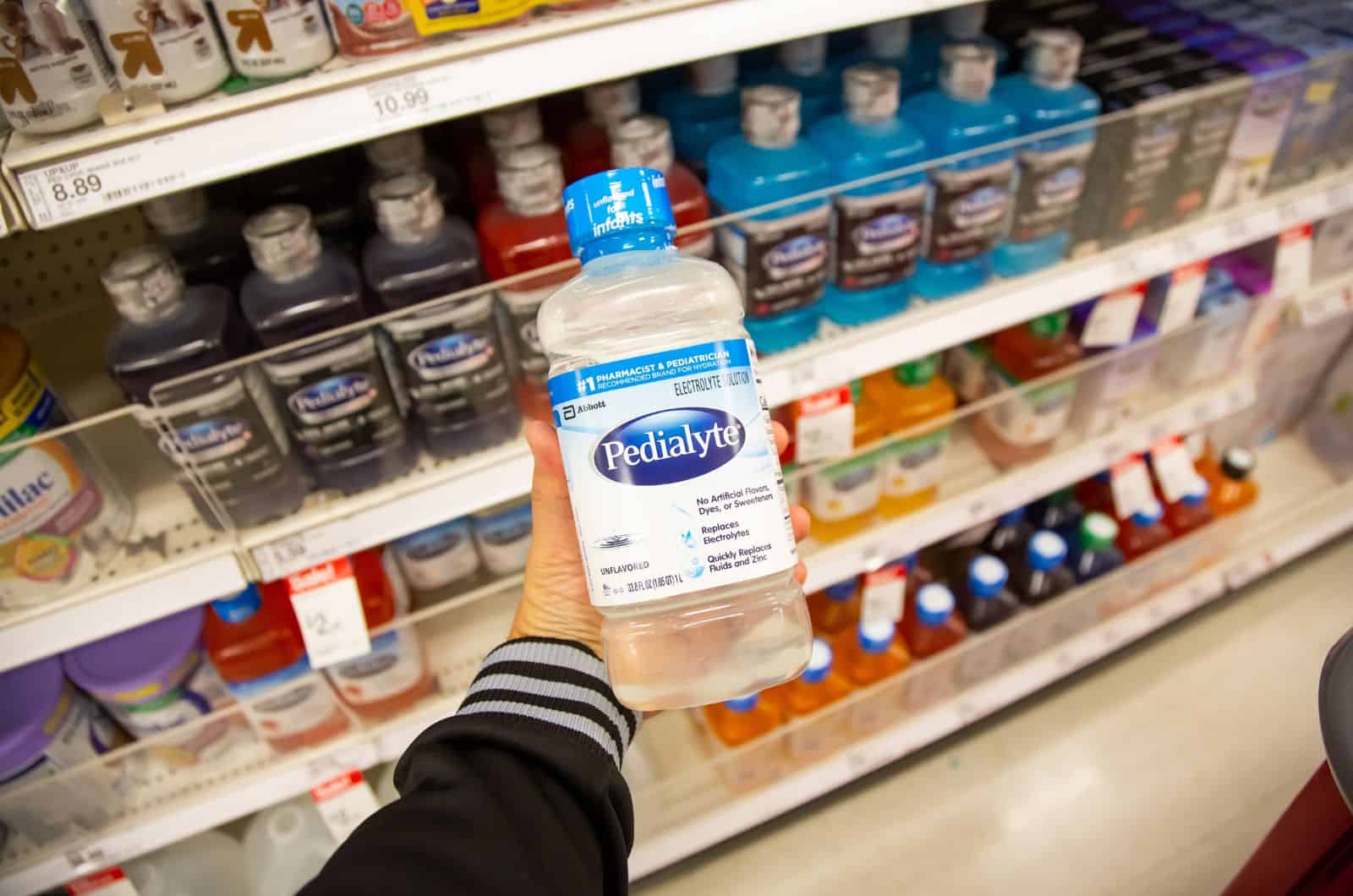
Pedialyte for cats is a safe and efficient way to rehydrate and replenish lost electrolytes for your feline friend. Just a few drops every 10 minutes for a few hours will be enough to give a cat.
However, it must be stated that Pedialyte is only an option in mild cases of dehydration, and is not suitable for providing optimum hydration to cats that are severely dehydrated.
Use an unflavored Pedialyte and give only small amounts. You should see your cat get better within a few hours. Encourage your pet to drink fresh water and eat some wet cat food.
If you observe that your cat is not getting better and is refusing to eat and drink, then I highly recommend visiting the veterinarian.
I’m sure your cat will be perfectly fine and I hope no trips to the vet will be needed! Remember – stay hydrated (and I’m talking to both you and your kitty!).
Related Articles:
Can Kittens Drink Water? What’s Best For Them?
Do Cats Like Milk? Truth Or Myth?
Cat Suddenly Lethargic And Weak – Causes & Treatment Options
Like this post? Share or pin it for later!
